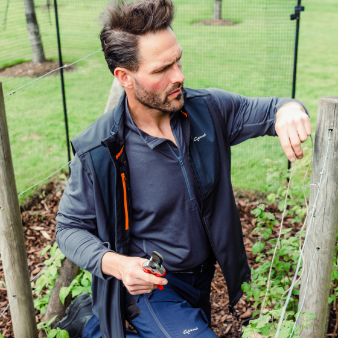Body, soul and gardening - mycorrhizal fungi for healthy plants and people

Healthy plants and edibles grown in soil that’s in the best possible condition will ensure that they – as well as us who eat them – thrive. And the more we encourage a rich soil life of microbes and fungi, the healthier the soil will be.
One of the most important soil organisms is fungi. The largest of all fungal material is mycorrhizal fungi which comes from the Greek words mycos (meaning fungus), and rhiza (meaning root). This important fungus penetrates the plant’s roots, enabling it to absorb more moisture and nutrients. The fungi also help the plants develop a secondary root-like network in surrounding soil, increasing its access to moisture and nutrients that are less accessible, such as phosphorous, even further. Other benefits of mycorrhizal fungi include improving soil structure, which redresses the harms caused by compaction and reduces the likelihood of detrimental fungi and bacteria.
You can introduce mycorrhizal fungi into your garden in powder form by dusting it over the roots of plants at the time of planting. Gardeners can also encourage it to develop naturally through cutting back on soil cultivation, which destroys the fungal networks, and increasing organic matter rather than simply relying on artificial fertiliser. It also helps to grow a continued supply of plants as their living roots will help the microbial life of the soil to keep going – and using a variety of plants, and crop rotation, to promote different types of fungi.
So, keeping your garden as natural as possible by not over-digging or fertilising will give the mycorrhizal fungi the best chance to grow abundantly and help other organisms to do the same.







